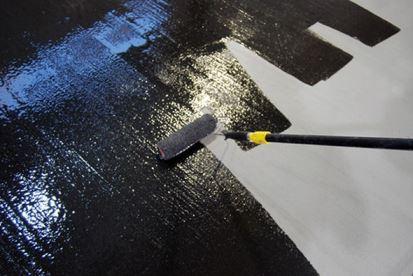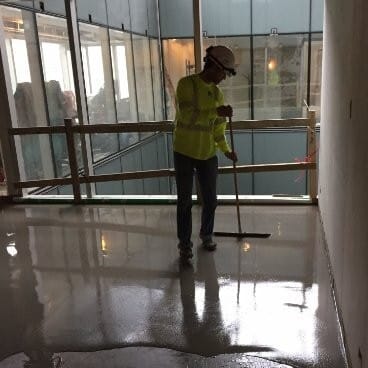
At TC Floors, our goal is to offer flooring options, as well as successful installations for our clients. Part of this process will require testing the slab for vapor emissions and moisture content before installing all products. Moisture may promote mildew and mold growth, cause adhesive failures, and eventually cause product delamination, bubbling or curling. We correct and identify moisture issues early on to make sure there is a successful installation, as well as maximum long-run value for your flooring.
Readiness of concrete slab
How will you know your slab is prepared to receive flooring covering? A universally recognized test method for moisture is ASTM F2170 for relative humidity and ASTM F1869 for calcium chloride. Tests will measure the moisture that is contained inside and emitted from the slab. The tests last from 60 to 72 hrs. and will require the environment to stay at 75°F, along with a relative humidity of 50 percent for 2 days during and before the test.
It is essential that you have a completely operating HVAC system for the required conditions to be met after, during and before the test. Besides moisture testing, the concrete’s surface has to be pH tested for alkaline salts that may be brought to the slab’s surface by vapor, as well as lead to failures in flooring adhesives.
Transmission of moisture
How does transmission of moisture happen? There are numerous reasons; however, the most typical involve:
- Not enough water draining off from the structure — moisture will travel from the exterior, up through and into the capillaries and via the interior flooring system.
- Ground water that seeps in from beneath the slab.
- Rain or slab rewetting before the structure is enclosed.
- Incorrectly installed barrier — vapor barrier has to be correctly installed and be free of holes to prevent all vapor from coming up from the floor, as well as through the slab.
One other common moisture transmission cause is not enough time for drying after the concrete gets poured. As the concrete cures, it’ll take time for the moisture to escape; however, construction deadlines and time constraints may leave concrete without enough time for drying. Even upper-level, pan-poured flooring may create moisture issues if enough curing time is not allotted. Regular conditions will require 120 – 180 days.
How to prevent moisture
How do we prevent such issues? You might never have the ability to fully prevent problems with moisture, yet it’s possible to minimize them. Listed below are 5 measures to controlling moisture.
- Put in a high-quality barrier, and make certain there aren’t any cracks or holes
- Utilize a low cement/water ratio
- After concrete sets, scarify the concrete’s surface to get an excellent bond with floor adhesives
- Avoid slab rewetting
- Have a completely operating and functioning HVAC system that meets the required conditions.
We complete address and evaluate moisture problems in your concrete, as they’ll affect your flooring coverings for years into the future.
For more information on moisture remediation in concrete floors contact the most qualified concrete repair company, TC Floors today!

